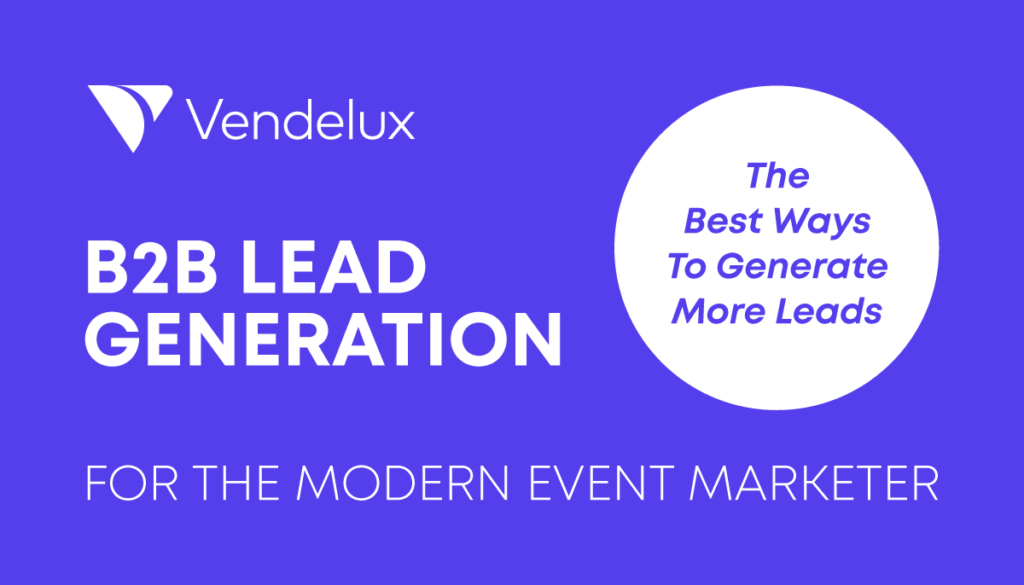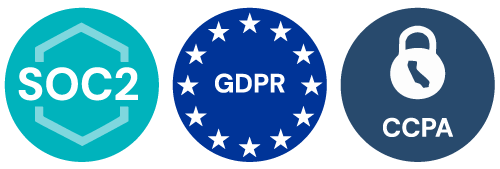Lead generation stands as the backbone of any effective B2B marketing strategy, serving as the pivotal process to identify and cultivate potential customers, thereby guiding them through the sales process towards conversion.
However, B2B lead generation is a complex task, primarily because the buyer’s journey in B2B contexts tends to be significantly longer than in B2C. Typically extending between 6-9 months, this extended sales cycle is a testament to the intricate nature of B2B sales and the detailed decision-making process.
What is B2B Lead Generation?
B2B lead generation is a crucial marketing process for companies that sell to other businesses. It involves identifying potential customers, or leads, and nurturing them with the goal of converting them into paying customers.
This process is pivotal for the sales team, as it fills the sales pipeline with more leads, thereby increasing the chances of achieving more sales.
Lead generation strategies in the B2B context often include a mix of content marketing, search engine optimization (SEO), email marketing, and the use of lead capture forms and lead magnets.
By understanding the job titles and needs of their target audience, businesses can tailor their marketing messages and campaigns to attract high-quality leads.
Through effective lead generation efforts, businesses can generate leads that are more likely to convert into sales leads, ultimately impacting the sales process positively.
Integrating Automation and Tools in Lead Generation
In addition to identifying and nurturing potential customers, B2B lead generation encompasses a variety of marketing tools and techniques. This includes leveraging marketing automation platforms to streamline and optimize lead generation efforts.
Through these tools, businesses can efficiently capture leads, segment them based on specific criteria such as industry, job title, or interest level, and automate personalized follow-up communications.
This automation not only enhances the efficiency of the lead generation process but also ensures a consistent and relevant engagement with prospective customers.
Enhancing Visibility and Attracting Leads through SEO
By integrating strategies like content marketing and SEO, businesses can increase their visibility on search engines, attracting more organic traffic and, consequently, generating more leads.
This holistic approach to lead generation is essential in today’s digital marketplace, where the ability to effectively attract and engage with the target audience can significantly impact the sales process and overall business growth.
Types of B2B Leads
There are several types of B2B leads, each representing different stages in the sales funnel. The most common types include:
- Marketing Qualified Leads (MQLs): These leads have engaged with your marketing efforts (e.g., downloaded a lead magnet, filled out a form) but are not yet ready to buy.
- Sales Qualified Leads (SQLs): Leads that have been evaluated by the sales team and deemed ready for direct sales follow-up.
- Product Qualified Leads (PQLs): In businesses with a product-led growth model, these leads have used your product (often through a free trial) and shown interest in becoming a paying customer.
- Service Qualified Leads: These are leads interested in your services, often identified by the service team and referred to the sales team for closure.
Understanding the differences between these leads is crucial for effective lead nurturing and conversion.
Tailoring Strategies for Different Lead Types
Understanding the nuances of different types of B2B leads can greatly enhance lead generation campaigns. For instance, MQLs often require nurturing through educational content and email marketing to move them further down the funnel towards becoming SQLs.
On the other hand, SQLs require a more direct approach, often involving one-on-one interactions with sales reps. Here, the sales team’s understanding of the lead’s specific business needs and pain points becomes crucial.
Leveraging Social Media and Targeted Campaigns
In today’s digital age, social media platforms and targeted ad campaigns have become vital in identifying and engaging with these different types of leads.
By using a mix of content marketing strategies and lead nurturing tactics, businesses can effectively cater to the unique needs of each lead type, ultimately increasing the lead volume and quality and driving more effective sales outcomes.
The Lead Generation Process
1. Identifying the Target Audience
Foundation of Lead Generation: Start by precisely identifying who your target audience is. This involves understanding the specific characteristics, needs, and business contexts of the companies you aim to serve.
2. Attracting Prospects with Content and Lead Magnets
Engaging Through Valuable Content: Utilize engaging and relevant content like blog posts, whitepapers, and webinars tailored to the interests of your target audience.
Effective Use of Lead Magnets: Offer valuable items like free trials, eBooks, or exclusive reports in exchange for contact details to effectively capture leads.
3. Utilizing Marketing Channels and Tools
Multi-Channel Approach: Deploy various channels such as email marketing, social media, search engines, and targeted ad campaigns to reach your audience.
Automation for Efficiency: Implement marketing automation tools for scheduling content distribution and managing interactions, enhancing the efficiency of the process.
4. Qualifying and Nurturing Leads
Assessing Lead Potential: Qualify captured leads by evaluating their interest level, need, and position in the buying journey.
Tailored Lead Nurturing: Engage qualified leads with personalized content and communications to guide them through the sales funnel towards becoming sales-ready leads.
5. Sales Engagement and Conversion
Direct Sales Interaction: Have the sales team engage with sales-qualified leads (SQLs) to convert them into customers, focusing on understanding their needs and offering relevant solutions.
Closing the Deal: Sales reps should address concerns and articulate the value proposition effectively to close the deal.
6. Analysis and Optimization
Measuring Success: Continuously track key metrics such as lead volume, conversion rates, and return on investment to gauge the effectiveness of the lead generation strategies.
Refining Strategies: Use insights from data to constantly refine and improve the lead generation process, adapting to market changes and evolving customer preferences.
Why is B2B Lead Generation Important?
B2B lead generation is important because it is a foundational step in acquiring new customers and growing a business.
Generating leads ensures a steady flow of potential customers into the sales funnel, allowing the sales team to convert them into paying customers.
Effective lead generation also helps in segmenting leads based on their interests and behaviors, enabling personalized marketing campaigns. This targeted approach increases the chances of converting leads into high-quality leads and, eventually, sales.
A robust lead generation process helps create brand awareness and establish authority in the market.
By consistently creating quality content and employing strategic marketing tools, businesses can attract not just new leads but also nurture existing customers, fostering long-term business relationships.
Establishing Market Position and Building Trust
Effective B2B lead generation strategies contribute significantly to a business’s market positioning and customer perception. By consistently producing and sharing valuable content, businesses can establish themselves as thought leaders in their industry, fostering trust and credibility with their target audience.
This not only aids in generating new leads but also in retaining existing customers, as they perceive the business as a reliable source of information and solutions.
Adapting to Market Trends and Customer Needs
Additionally, lead generation provides invaluable insights into market trends and customer preferences, allowing marketing managers to refine their marketing messages and product offerings continually.
This adaptive approach ensures that the business remains relevant and competitive in a rapidly evolving marketplace.
In essence, B2B lead generation is not just about capturing leads; it’s about building a sustainable business model that thrives on understanding and meeting the evolving needs of its target market.
How to Generate More B2B Leads
The competitive B2B landscape, marked by rapid technological advancements, burgeoning startups, and evolving buyer behaviors, places even greater emphasis on the need for effective lead generation strategies.
In light of these challenges, sales and marketing teams must reassess their lead generation approaches, especially when traditional methods show diminishing returns.
This often involves adopting new strategies to generate more qualified leads and bolster the sales pipeline.
Here are 5 ways to generate more B2B leads.
1. High Quality Content Marketing
Content should be central to your marketing strategy. Good quality content marketing will not only help you appear higher in the search results, but more importantly, will give you credibility as an authority in your industry. By creating and distributing content that gives value, educates and inspires your target audience, you sit top of mind when they are ready to convert.
Studies show that B2B buyers consume up to eight pieces of content before making a buying decision. Focus on creating evergreen content based on thorough research about your audience’s problems and queries, that your product or service can help.
Use this content to build trust as an expert in your market, and to nurture your audience until they convert into a marketing qualified lead (MQL).
Content marketing doesn’t just help convert leads from warm contacts who already know of your business, it also helps build brand awareness with new audiences.
The more quality content you share, the more exposure you’re likely to receive on search results, through word of mouth and knowledge sharing, making it easier to generate new business leads.
2. Create an Event Marketing Strategy
Event marketing is vital for B2B lead generation. Every B2B business should have an event marketing strategy that’s centered around lead generation. Without events, B2B organizations rarely get a chance to build connections with their audiences in real life.
In-person and online events give marketing and sales the opportunity to:
- Speak directly with their target audience,
- Find out about their pain points and how they’re currently operating
- Create word of mouth
- Increase brand awareness
Marketing and sales teams can use the insights gained from meeting prospects in person to:
1. Improve other areas of marketing to cater to these needs. Resulting in more MQLs in general. And,
2. Forge greater relationships with event attendees so their loyalty lies with your company when they’re ready to buy.
But it doesn’t just start with attending. The process begins with deciding which events to attend based on who out of your target prospects is likely to be there.
By choosing the right events (using an event intelligence platform like Vendelux Fusion), warming up marketing leads starts weeks or months before the event has begun. From social media posts telling people you’re attending, to reaching out to prospects to start discussions early.
Vendelux makes producing B2B event leads easy as pie. Event marketers already search through our 30,000+ B2B events to find details and forecast who out of their target audience will be attending. Meaning that you can book in-person meetings and connect with target customers before the event even happens. Guaranteeing more marketing leads from every event you attend!
Don’t have an event marketing strategy but want to get started? Click here.
3. Optimize Lead Generation Landing Pages
Lead generation landing pages are specific pages on your website created with the goal of the user becoming a lead. The lead generation landing page should be short, simple, and offer one focus goal CTA to encourage users to convert.
These landing pages should cut out the fluff, and explain the value you can bring to B2B customers.
To optimize them, reduce the number of distractions and make the process – from landing on the page to completing the goal – as quick and easy as possible.
While on your website pop ups and personalization can work a treat, on lead gen pages stick to one Call to action (CTA), and make contact information or forms straightforward to complete.
Top Tip: use the insights you gain from events to inform your lead gen landing page. Turn pain points, worries and questions you hear from prospects, into how your product or service is a direct solution.
4. Run Discounts/Offer Retargeting Campaigns
It’s common knowledge that cart abandonment is a common issue for B2C ecommerce companies. But not many realize how big a problem it can be for the B2B customer journey too.
A user may be on the fence about contacting your company, or get distracted and forget to fill out the form despite spending time on your lead generation page.
Rather than losing potential leads, consider running a retargeting campaign that reaches those who exited your site after reaching your conversion page. Create a time-sensitive offer or a discount that entices users back and encourages them to convert.
An example could be offering a free trial of your product, or a discount for the first month using the product or service.
5. Ask Customers for Reviews
As well as consuming eight pieces of content before making a decision, B2B buyers also read five pieces of third-party content about a company to decide if it’s a good fit for them.
The third-party content helps them make a final decision or give them the nudge they need to the final stage of the funnel. The best kind of content for this is testimonials and reviews.
Reviews increase conversions. In fact, according to TrustRadius “On average, in B2B you can expect reviews to increase landing page conversions by 30%.”
While this is a lead generation tactic used by B2C marketers, B2B companies tend to neglect it. Encourage reviews on B2B sites like Capterra, G2, TrustRadius and TrustPilot. Struggling to get reviews? With the amount of sales leads it could generate, offering an incentive to current customers is worth the ROI.
Measuring and Analyzing B2B Lead Generation Success
1. The Importance of Metrics in Lead Generation
Evaluating Campaign Effectiveness: In B2B lead generation, it’s not just about the quantity of leads but their quality and potential to convert into sales. Regularly measuring and analyzing key performance indicators (KPIs) is essential to understand the effectiveness of various campaigns.
This evaluation helps in identifying successful tactics and areas needing improvement, ensuring that resources are allocated efficiently for maximum impact.
2. Key Metrics to Track
Lead Volume and Quality: Tracking both the number of leads and their quality is crucial. High-quality leads are those that match the target audience profile and show a genuine interest in the products or services offered. They are more likely to progress through the sales funnel to a successful conversion.
Conversion Rates: Monitoring conversion rates at each stage of the sales funnel provides insights into how effectively leads are moving towards a sale. This includes tracking conversions from initial contact to marketing qualified lead (MQL), then to sales qualified lead (SQL), and finally to a paying customer.
ROI Analysis: Calculating the return on investment (ROI) for different lead generation activities is critical. This involves comparing the revenue generated from converted leads against the costs of the campaigns, providing a clear picture of financial effectiveness.
3. Tools for Tracking and Analysis
Utilizing Analytics Software: Leveraging analytics tools such as Google Analytics, HubSpot, or Salesforce can provide detailed insights into lead generation performance. These tools offer capabilities to track website traffic, lead sources, and user behavior, contributing to a deeper understanding of lead generation dynamics.
Integrating CRM Systems: CRM systems are invaluable for tracking interactions with leads and customers throughout the sales cycle. They help in organizing lead data, monitoring sales team activities, and measuring conversion rates, providing a comprehensive view of the lead generation process.
4. Making Data-Driven Decisions
Adjusting Strategies Based on Data: Data-driven decision-making allows businesses to refine their lead generation strategies effectively. Analyzing lead source data, for instance, can reveal which marketing channels are most productive, guiding where to focus future efforts.
Predictive Analytics: Advanced tools offering predictive analytics can forecast future trends based on current data. This helps in anticipating market changes and customer needs, allowing for proactive adjustments in lead generation strategies.
5. Continuous Improvement
Adapting to Market Changes: The B2B marketplace is dynamic, with evolving customer preferences and competitive landscapes. Continuous analysis of lead generation data helps businesses stay adaptable, making necessary adjustments to strategies in response to these changes.
Feedback Loops and Learning: Establishing feedback loops with the sales team and customers is vital for continual improvement. Regular feedback can uncover insights into customer satisfaction and sales team challenges, informing more targeted and effective lead generation tactics.
The Key to B2B Lead Generation: Solving a Problem for the Customer
Central to B2B lead generation is the task of addressing the customer’s specific problems. For B2B marketers, the challenge lies in gathering in-depth information about potential customers, particularly company employees and their unique challenges.
Unlike easily accessible public data, insights into specific pain points and needs of these potential leads often require more direct interaction. This is where the significance of in-person meetings becomes evident, positioning them as a vital component of a solid lead generation strategy.
Sales and marketing teams engaged in B2B lead generation must focus their efforts on understanding their target audience’s job titles, roles, and industries to tailor their marketing messages effectively.
This involves deploying a range of strategies, from content marketing aimed at addressing common industry issues to utilizing lead generation tools like landing pages and lead capture forms to gather customer information.
Incorporating elements like lead magnets, email marketing, and social media marketing strategies further enhances the ability to attract and capture leads.
The lead generation campaigns process in B2B settings often involves a multi-faceted approach, combining outbound marketing tactics with inbound leads generated through digital marketing channels.
Marketing teams strive to create quality content that resonates with their ideal customers, employing marketing platforms and tools that enable segmenting leads and nurturing them through the sales funnel.
The ultimate goal is to convert these leads into sales qualified leads, adding them to the sales pipeline and contributing to the overall sales process.
In this journey, each lead generation campaign, whether it involves LinkedIn ads, Facebook lead ads, or content-driven blog posts, plays a critical role in generating more leads, thereby driving customer success and sales.
If you’d like to check out Vendelux, start searching for the best b2b events, today.




